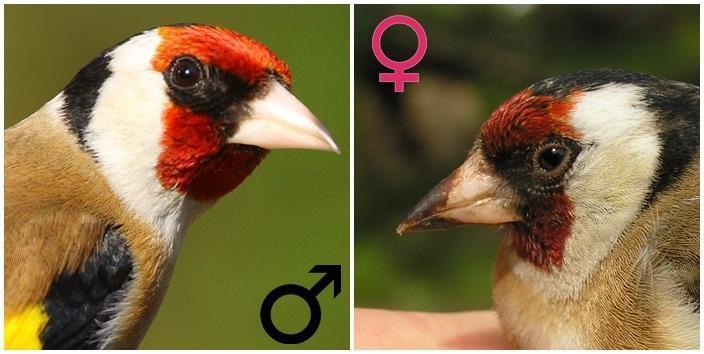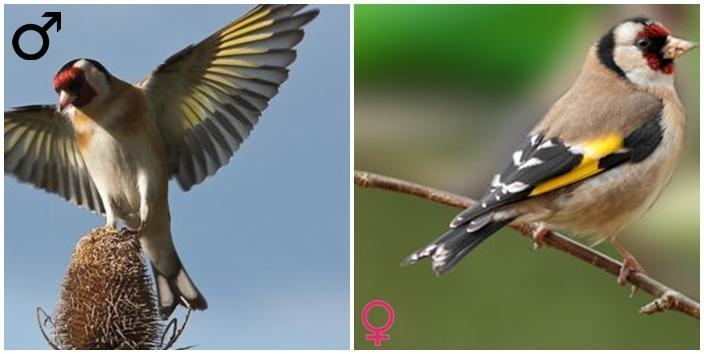How to Tell a Male from a Female Goldfinch


The European goldfinch or Carduelis carduelis is a very popular bird among ornithologists, as it emits a beautiful and unique song and delights with its colorful plumage. If you're wondering how to differentiate between a male and a female goldfinch, keep reading this AnimalWised article to find out.
In this article we will try to help you to easily distinguish sex in adult and young goldfinches, the latter of which is more complicated. Just remember that the European goldfinch is a protected bird in many countries, and it should never be taken from its natural habitat.
Read on and discover how to tell a male from a female goldfinch.
How many types of European goldfinch are there?
Many subspecies of European goldfinch exist in Europe and parts of Asia. For instance, the Carduelis carduelis parva is common in Spain, while the Carduelis carduelis caniceps is found in Pakistan, the Himalayas and Nepal.
There are at least fourteen subspecies of European goldfinch, and they are divided into two groups. The first group, the carduelis subspecies, live mostly in Western Europe and some areas of North Africa; these goldfinches are recognizable because the top of their heads are black. The second group, the caniceps subspecies, live mostly in Western Asia and they have gray crowns.
In addition to the wild goldfinch subspecies, there are new types that are bred in authorized breeding centers. The selection of specific specimens for breeding offers the possibility of developing peculiarities in the plumage.
Due to the many different types and subspecies of European goldfinch, to begin to tell a male from a female goldfinch you should pay attention to the subspecies you are looking to breed. Still, do not worry if you are sure, read on!

1. The face
To begin to differentiate between a male and female goldfinch, you should look at the animal's face. Males tend to have a larger area of intense red color whilst females are smaller and darker. There is a small ledge just above the eye of the male, which is not as obvious on the female.
In addition to the color of the face, the shape of the beak varies slightly: the male's is somewhat curved whilst the female's is straighter.
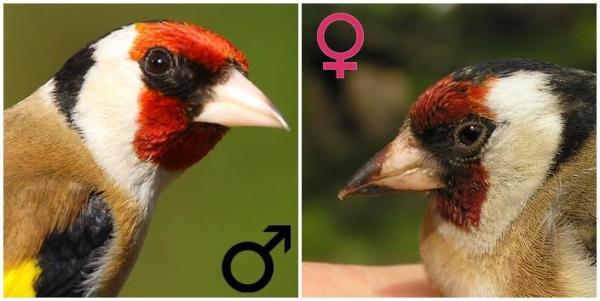
2. The wings
In addition to the face, the wings of a European goldfinch provide valuable information to help distinguish a male from a female. To get started, look at the yellow stripe on the wings which is shorter in females and wider in males.
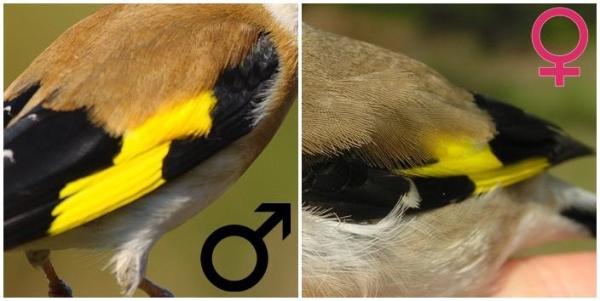
Also look at the shoulder with the wing extended: males tend to have defined black strip (left), while the females do not (right).
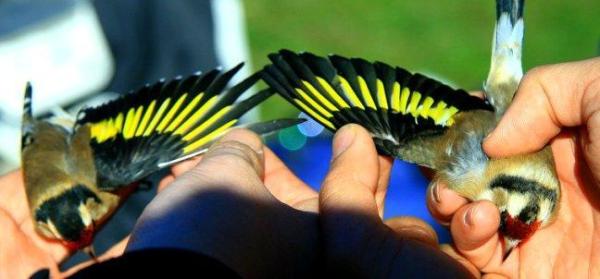
3. Tail
Finally, and to end our article on how to tell a male from a female goldfinch, we'll focus on the tail feathers. The tail of the male European goldfinch is more rounded, almost heart-shaped while the female's is straighter:
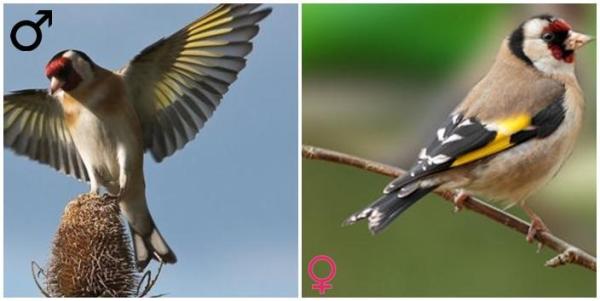
Sexing young birds
We must emphasize that, of course, it is much easier to determine the sex of an adult than a young goldfinch as the latter is yet to develop. We can start to identify some details specific to each sex clearly from about a month and a half old.
We must remember that holding a female goldfinch is considered a crime in many countries if we are not an authorized breeding center or if we do not hold a license to do so. It depends on the legislation under which we operate as each state and community has their own.
The European goldfinch is a magnificent and beautiful bird, and it is considered one of the 5 best singing birds in the world. We must protect and care for goldfinches so our children will be able to marvel at their beauty too. Never trust anyone who offers you a European goldfinch without a band. This bird may be illegally taken from the wild by irresponsible poachers and breeders.
Have you managed to identify the sex of your goldfinch? If you have not, share your photo so that AnimalWised can help.
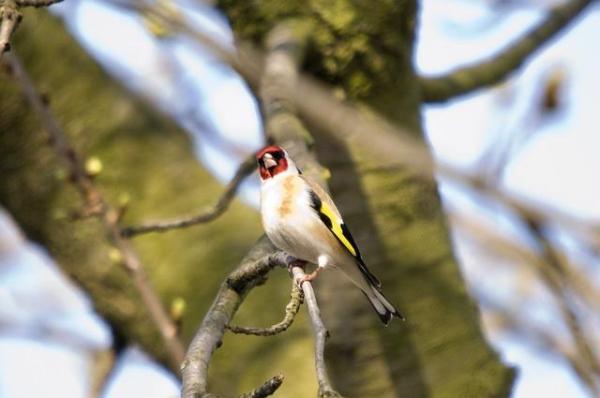
If you want to read similar articles to How to Tell a Male from a Female Goldfinch, we recommend you visit our Facts about the animal kingdom category.






 Is mine a female?
Is mine a female?


 M or f
M or f

 Hello AnimalWised.
Hello AnimalWised.
 Male or Female Goldfinches please ?
Male or Female Goldfinches please ?

 Can tell if this female or male
Can tell if this female or male

 Hello, l took some clearer pictures,if they can help.
Hello, l took some clearer pictures,if they can help.
 Hello everybody,
Hello everybody, 

